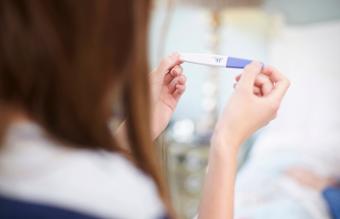
If you are sexually active and not interested in having a baby at this time, you may want to know about the least likely time to get pregnant. Knowing when you are most likely to get pregnant as well as least likely can help you ensure you meet your individual family planning needs.
Understanding the Menstrual Cycle
The best way to understand when you are least likely to get pregnant is to understand the menstrual cycle and your best time to get pregnant. The menstrual cycle is typically 28 days long, but can range from 21 to 35 days in length. Day 1 is the day that menstrual bleeding begins. Around one week later, your hormone levels start to increase leading to ovulation. After ovulation, hormone levels decrease if there was no conception and the menstrual bleeding usually begins again 12 to 14 days later.
When Is the Best Time to Get Pregnant?
When is a woman most likely to get pregnant? Pregnancy is more likely to happen during the short window of the monthly cycle while you are ovulating. Ovulation is the release of an unfertilized egg from one of your ovaries and usually occurs on day 14 if your cycle is 28 days long. Ovulation only lasts 24 hours but can occur earlier or later than day 14 and can vary from woman to woman. Since sperm can live inside a woman's body for up to five days, there is a window of approximately six days around day 14 when you are most fertile. If you are wondering, "When am I most likely to get pregnant?" it's likely within those six days around day 14 or when you ovulate.
Least Likely Time to Get Pregnant
The least likely time for you to get pregnant is during days 1 to 7 of your cycle. You usually will be having your menstrual flow during part of this time during the month, and this may be the best time to not get pregnant if you are planning on having intercourse.
- In a typical length cycle, you will be ovulating around day 14. However, it is possible to ovulate at a different time if your period is more irregular or is shorter than 28 days. You should remember that you ovulate 14 days before your menstrual period starts; if your cycle is shorter than 28 days, for example 21 days, you may ovulate around day 7.
- If your cycle is irregular, you may ovulate on different days each month. Mapping out your own cycle and determining your ovulation period can help you learn when you are most fertile and least likely to get pregnant.
How to Determine When You Are Most Likely to Get Pregnant
You can chart your own cycle to find out times that you are the most fertile and the least fertile. There are a few ways to do that:
Basal Body Temperature
Basal body temperature can be an indicator. Your temperature first thing in the morning before you get out of bed goes up by at least 0.4 degrees during the 48 hours when you ovulate. You should take your temperature at the same time each morning and put the information on a chart. After the month is finished, you can look at the data and see when you ovulated. After charting your cycle for a few months, you will have a good idea when you normally ovulate and, therefore, when you are the most fertile. If your cycle is irregular, this method may not tell you when you regularly ovulate.
Cervical Position and Mucus Changes
During your cycle, your cervix and cervical mucus undergoes changes that are associated with the stage of your cycle. When you are ovulating, your cervix shifts upward and the mucus produced by your cervix resembles raw egg whites or is watery. Tracking these changes in your body can also help you recognize when you are ovulating.
Ovulation Predictor
An ovulation predictor can help. There are tests available that can predict your ovulation. Since they cost money, most women use them when they are trying to get pregnant and not to map out their fertility cycles. Women are most fertile during ovulation, so if you are wondering if you are you more fertile after your period, the answer is most likely no.
Knowing Your Cycle
If you are trying not to get pregnant, you need to have a good understanding of when you are most likely and least likely to get pregnant before you have sex without using any birth control. Understanding when is a girl most likely to get pregnant cane help make wise decisions about when to engage in intercourse for your family planning.







